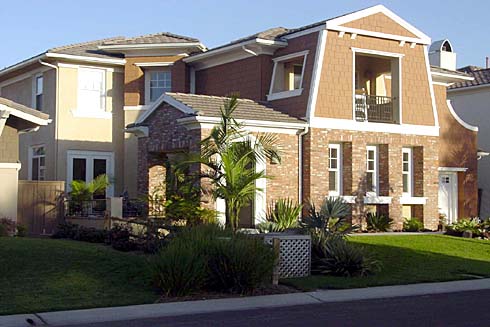TANGIBLE PROPERTY
Unveiling the Essence of Wealth: Exploring Tangible Property in Real Estate
Introduction:
Defining Tangible Property:
Real Estate as Tangible Property:
At the core of tangible property in the realm of real estate lies the tangible nature of land and buildings. Real estate, often considered one of the most substantial investments, provides a physical foundation for numerous activities, from residential living to commercial enterprises.
Physical Presence and Permanence:
What sets tangible property apart is its physical presence and permanence. Unlike intangible assets, which lack a physical form, tangible property can be observed and touched. This characteristic gives owners a concrete connection to their investments.
Residential Tangible Assets:
Homes and residential properties epitomize tangible assets. The touch of a doorknob, the sight of a well-manicured garden, and the feel of hardwood floors all contribute to the tangible experience of homeownership. The emotional and aesthetic value intertwined with residential tangible assets adds another layer of richness.
Commercial Real Estate:
Tangible property extends beyond the residential sector to encompass commercial real estate. From office buildings to retail spaces, these tangible assets serve as the physical infrastructure supporting businesses and economic activities.
Cultural and Historical Significance:
Tangible property can also include assets of cultural and historical importance, such as landmarks, monuments, and heritage buildings. These structures not only hold intrinsic value but also contribute to the identity and heritage of a community.
Valuables Beyond Real Estate:
While real estate dominates discussions of tangible property, the concept extends to other valuables. Physical assets like artwork, collectibles, and precious metals fall under the umbrella of tangible property, adding diversity to one's portfolio.
Significance in Real Estate Investment:
Stability and Tangibility:
Investors often gravitate towards tangible property for its perceived stability. The tangible nature of real estate provides a sense of security, offering a physical asset that can weather economic fluctuations.
Portfolio Diversification:
Including tangible assets in an investment portfolio, whether in real estate or other valuable items, allows for diversification. This strategy helps mitigate risks and enhances the overall resilience of one's financial holdings.
Conclusion:
Tangible property, with its visible and touchable attributes, forms the bedrock of real estate and various valuable assets. As individuals and investors navigate the diverse landscape of wealth creation, the tangible nature of property stands as a testament to the enduring allure of physical assets. Whether a residential abode, a commercial space, or a cherished collection, tangible property remains a tangible expression of prosperity and permanence in the ever-evolving world of real estate.
Conclusion:
Tangible property, with its visible and touchable attributes, forms the bedrock of real estate and various valuable assets. As individuals and investors navigate the diverse landscape of wealth creation, the tangible nature of property stands as a testament to the enduring allure of physical assets. Whether a residential abode, a commercial space, or a cherished collection, tangible property remains a tangible expression of prosperity and permanence in the ever-evolving world of real estate.
MORE REAL ESTATE TERMS
A, B, C, D, E, F, G, H, I, J, K, L, M, N, O, P, Q, R, S, T, U, V, W, X, Y, Z
Featured New Home

Featured Mortgage Brokers
- FIDELITY BANK, ATHENS, GA
1045 S MILLEDGE AVE STE 200
ATHENS, GA 30605 - KENTUCKY HOUSING CORPORATION, FRANKFORT, KY
1231 LOUISVILLE RD
FRANKFORT, KY 40601 - American Finance-Thomasville, mortgage broker in Thomasville, GA
15179 US Hwy 19 South
Thomasville, GA 31792 - MCCUE MORTGAGE COMPANY, NEW BRITAIN, CT
1 LIBERTY SQ
NEW BRITAIN, CT 6051 - FIRST PRIORITY FINANCIAL INC, ROSEVILLE, CA
1050 OPPORTUNITY DR STE 145
ROSEVILLE, CA 95678